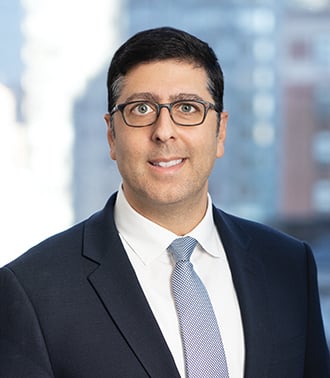Final DOL Regulations Address ESG Factors in Retirement Investing
On December 1, 2022, the US Department of Labor published a final regulation (the Final Rule) in the Federal Register addressing the extent to which fiduciaries of ERISA-covered retirement plans may consider ESG (Environmental, Social and Governance) and other factors when investing plan assets and, in the case of plans with participant-directed investment, selecting investment fund line-ups. These rules are highly relevant to financial institutions, funds and investment managers that structure and offer financial products to the ERISA plan market and to the fiduciaries responsible for managing plan assets. The Final Rule is substantially similar to the proposed rule (see our Advisory here discussing the proposed rule). Certain notable changes from the proposed rule are discussed below.
Background
The extent to which fiduciaries of retirement assets may consider ESG factors has been controversial for decades and the pendulum has swung from administration to administration on the question. In the Final Rule, the DOL has taken a moderate, middle-of-the-road approach by providing that, in general, ERISA plan fiduciaries may, consistent with their duties of prudence and loyalty, consider ESG factors when they are relevant to a risk/return analysis or to serve as a “tie breaker” between two investments that otherwise “equally serve the financial interests of the plan.” However, the Final Rule, like the proposed rule, makes clear that plan fiduciaries may not subordinate the interests of plan participants in their retirement income “to other objectives and may not sacrifice investment return or take on additional investment risk to promote benefits or goals unrelated to the interests of participants . . . in their retirement income.” The Final Rule is not, by its terms, limited to ESG investments, but would apply to a fiduciary’s review of other factors.
Notable Changes in the Final Rule
- “May often require.” The proposed rule stated that evaluation of an investment by a fiduciary “may often require an evaluation of the economic effects of climate change and other environmental, social or governance factors on the particular investment or investment course of action.” This aspect of the proposed rule proved to be controversial, with some commentators arguing that it was necessary to overcome the “chilling effect” of prior DOL rules on the consideration of ESG factors by retirement plans, while others argued that the language put a “thumb on the scale in favor of ESG investing.” DOL chose to resolve the dispute by removing that language in order to “achieve[] appropriate regulatory neutrality and ensure[] that plan fiduciaries do not misinterpret the final rule as a mandate to consider the effects of climate change and other ESG factors under all circumstances.”
- Participant Preferences. Unlike the proposed rule, which was silent on the point, the Final Rule expressly provides, as a “clarification,” that plan fiduciaries of an individual account plan (such as a 401(k) plan) will not violate their “duty of loyalty” solely because they consider participant preferences when selecting menu funds for self-directed plans. However, fiduciaries will continue to be required to meet the duty of prudence under ERISA and the Final Rule, which prohibits the selection of imprudent menu funds. Taking participant preferences into account raises many complex issues, such as how to reconcile divergent or conflicting participant preferences. The Final Rule leaves these issues to be resolved by plan fiduciaries. It is important to note that taking participant preferences into account is optional and not mandated by the Final Rule.
More broadly, the controversy over ESG investing has spread far beyond retirement plans and into many other investment contexts. For example, states such as Florida and Texas are in the midst of highly publicized disputes over, among other things, the impact of ESG investment on certain industries (e.g., the impact of ESG investing on hydrocarbon business interests in Texas). On the other hand, many governmental plans and other investment funds affiliated with states such as California and New York are openly pursuing ESG-related policy goals with their investment choices. These political and policy disputes are unlikely to be resolved soon and may impact whether the Final Rule may be modified or reversed by a future administration.
Conclusion
Financial institutions, funds and investment managers that structure and market products to ERISA plans and the fiduciaries who manage ERISA plan assets will want to consider the impact of the Final Rule on their products and activities and evaluate what changes may be appropriate. Because the Final Rule does not provide a safe harbor for either considering or not considering ESG and other factors, fiduciaries will need to continue to be vigilant in making and documenting investment decisions and decisions as to fund line-ups. In that context, it is likely that investment decisions, whether or not they take into account ESG factors, will be subject to ongoing scrutiny from federal and state regulators as well as the plaintiffs’ bar.
© Arnold & Porter Kaye Scholer LLP 2022 All Rights Reserved. This Advisory is intended to be a general summary of the law and does not constitute legal advice. You should consult with counsel to determine applicable legal requirements in a specific fact situation.




